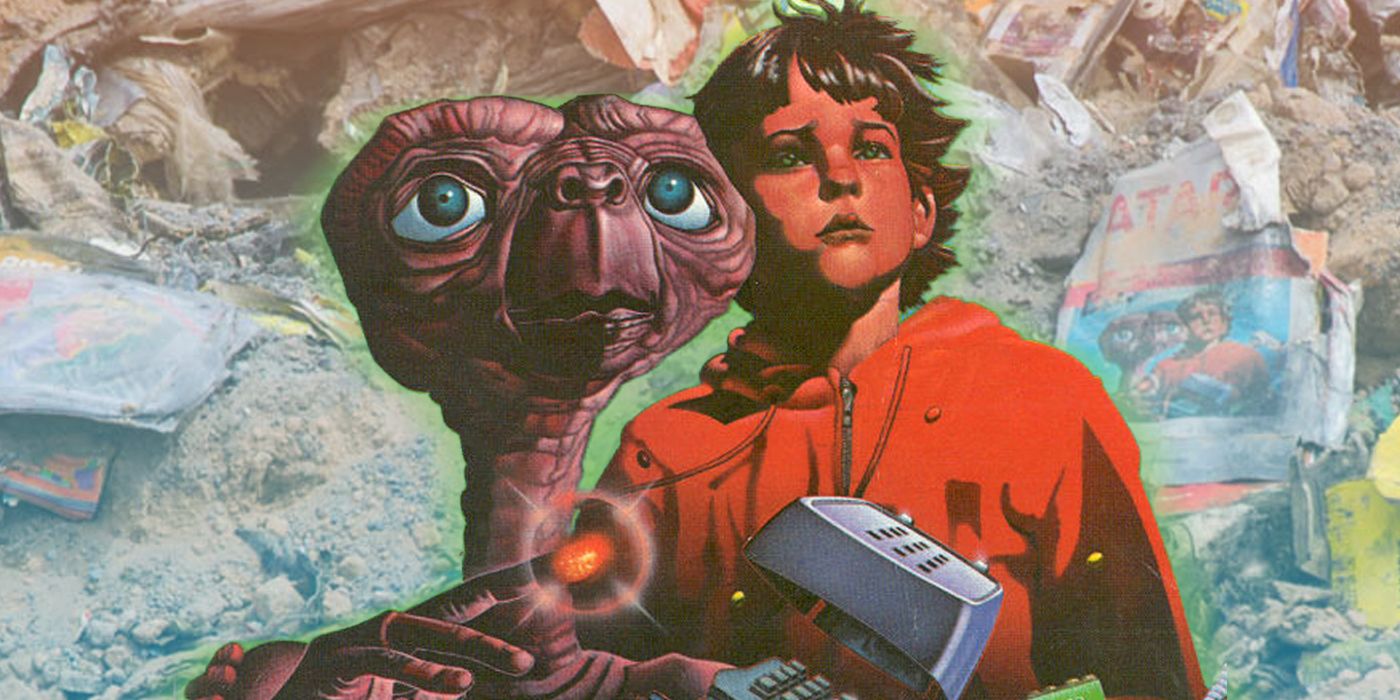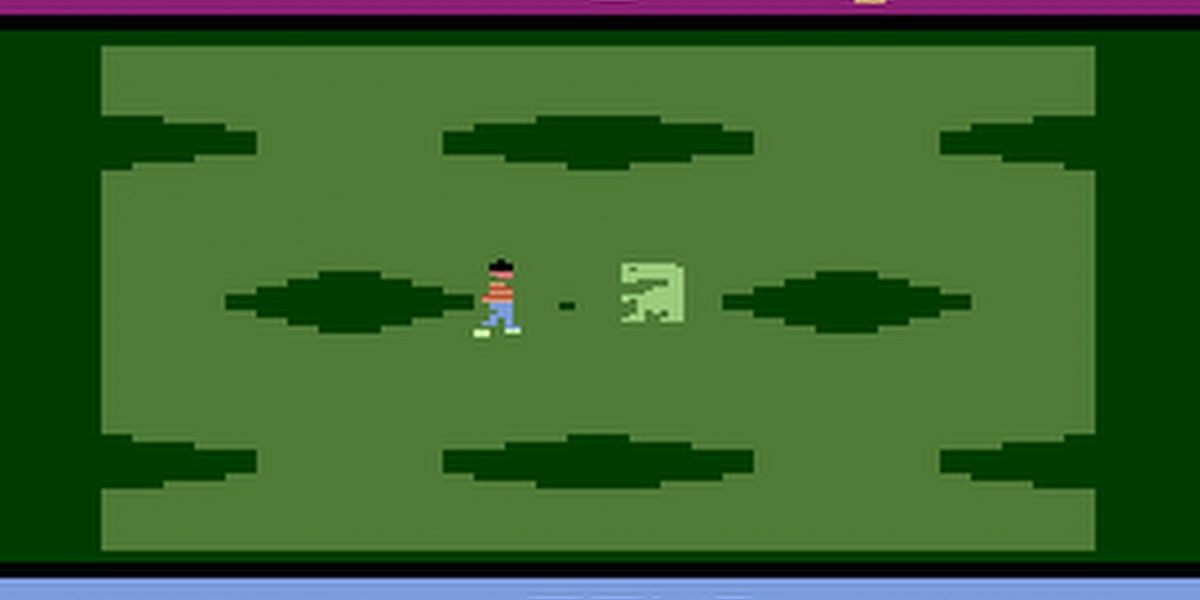The Atari 2600 title E.T. has a reputation for being the absolute worst video game ever created. Many people blame it for the great video game crash of 1983. While E.T. plays like complete and utter garbage, after looking into its history, it's amazing the game didn't turn out even worse. E.T. has an incredible backstory that explains how the game went from being a highly anticipated mega-hit to an industry toppling abomination.
The year is 1982, and E.T. The Extra-Terrestrial is taking the world by storm. The film became an overnight sensation shattering box office records around the globe. Video games are also achieving mainstream success with Atari consoles becoming commonplace in homes across America. The legendary video game company couldn't help but notice E.T's meteoric rise through pop culture and wanted to cash in on its popularity. Steve Ross, CEO of Warner Communications (parent company of Atari), wanted to obtain a license to produce an E.T. video game. After fierce negotiations and $23 million later, Ross acquired the license in the summer of 1982. The only problem was Spielberg wanted the game finished by the holiday season.
Atari approached a young programmer named Howard Scott Warshaw to see if he would develop the game. Warshaw already proved to be one of the best in the business with his previous games, Yars' Revenge and the video game adaptation of Raiders of the Lost Ark finding great success. He seemed like the perfect person for the tasks since he already had experience working with previous Spielberg properties. Warshaw agreed but was given only five weeks to develop the entire game.
It didn't take long for Warshaw to realize that he bit off more than he could chew. He had to create a video game that was both innovative and faithful to the film all by himself. Warshaw worked tirelessly on creating the best video game he could within the small timeframe Atari gave him. Most video games at that time took around six months to develop, so making a playable title in a fraction of the time was unheard of. Regardless, Warshaw persevered and finished the game by Atari's deadline.
Once Warshaw finished developing E.T, he flew to Los Angeles to show Stephen Spielberg the finished product. Spielberg was taken back by the game and asked Warshaw, "Couldn't you just do something like Pac-Man?" Warshaw became enraged by Spielberg's comment but managed to keep his composure. He later stated that he wanted to respond with "Well, gee, Steven couldn't you do something like The Day the Earth Stood Still?" but didn't want to say something that could jeopardize the video game. The iconic directed ended up approving the game, and Warshaw went back to Silicon Valley to prepare for E.T's launch.
E.T. made its video game debut just in time for the 1982 holiday season. Sales started strong but slumped shortly after its initial release, while video game fans hated the game and began flooding stores with returns. E.T became a total disaster with more people returning the game than purchasing it. Atari shipped out 4 million copies of the game, but 3.5 million of them were sent back due to the overwhelming number of returns. The burden became too much for Atari, who ended up dumping a majority of them in a landfill in New Mexico.
What was initially thought of as Atari's next big video game, ended up becoming one of its biggest failures. The great video game crash followed shortly after E.T's release causing many people to blame the game for the industry's demise. While it contributed to the crash, it wasn't the sole reason the industry tanked. Bad video games oversaturated the market during the early 80s, causing people to look for alternative ways to entertain themselves. There were other contributing factors, but the oversaturation of bad games and consoles ended up being the main culprit. Regardless, the legend of E.T. lives on and will forever be remembered as the game that nearly destroyed the video game industry.



